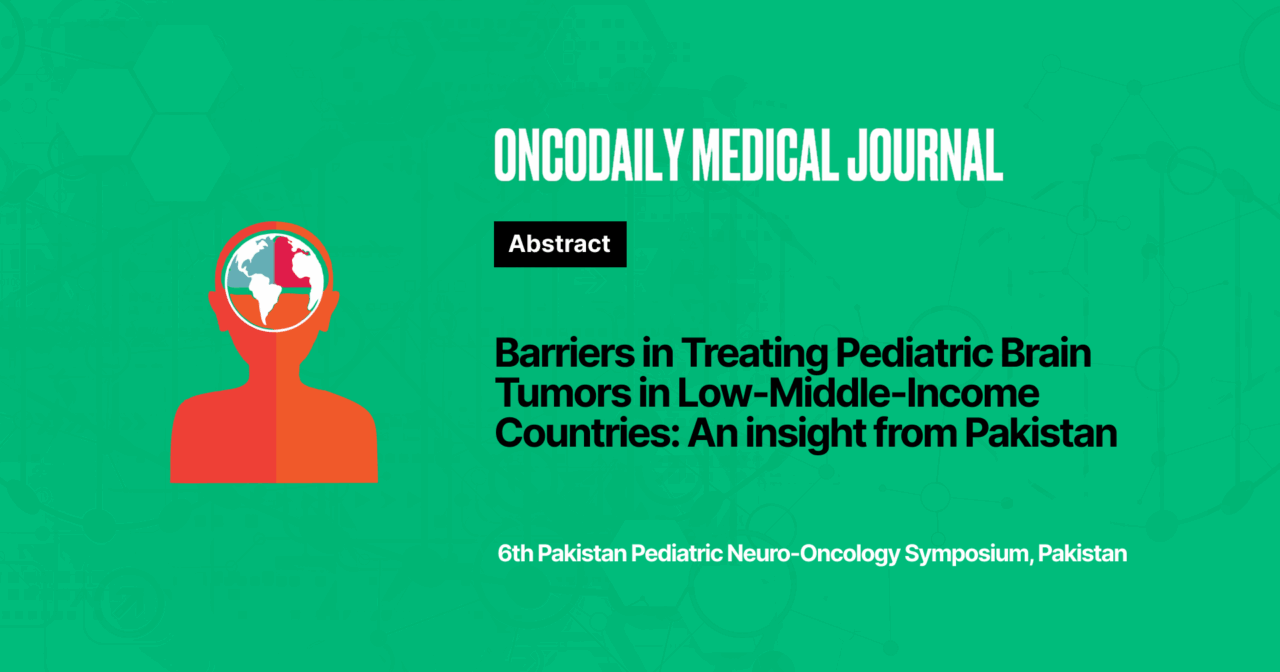Barriers in Treating Pediatric Brain Tumors in Low-Middle-Income Countries: An insight from Pakistan
Abstract
Introduction: Pediatric brain tumors include a diverse array of morphological subtypes with unknown causes. The study aims to elucidate the major challenges resulting in suboptimal outcomes and explore the way forward to address these barriers.
Methodology: The questionnaire instrument was developed and pilot-tested at Children’s Hospital Lahore Pakistan, the largest single clinical center treating pediatric brain cancers in Pakistan. One-to-one interviews were conducted from September 2024 to March 2025 with families presented to Children’s Hospital Lahore having children with brain tumors referred from different regions of Pakistan.
Results: A total of 179 children with brain tumors were included with a mean age of 7.45 years and a median of 7. Among these 65% are males (1.8:1 M:F ratio) and 70% live in rural areas with family income < 100 USD in 72% of families and a median of five siblings. The total duration of symptoms before presentation to the Children’s Hospital was 7.5 months (mean) and 3 months (median). The major presenting symptoms were headache (78%), vomiting (81%), gait abnormalities (81%), visual disturbances (61%), seizures in 46%. 46% were supratentorial,42% infratentorial, and 12% of brainstem origin.
A tumor biopsy was done in 37%, ventriculoperitoneal shunt was inserted in 41% and chemo was given in 18%. Gros total resection GTR was done in 6% patients, sub-total resection STR in 31%, and none in 63%. Radiation therapy was given in 19% children. 81% are alive with disease, 17% expired and 2% were given palliative care. 36% were diagnosed with microscopically and the rest on a clinical and imaging basis. The tentative diagnosis was low-grade glioma LGG in 18%, high-grade Glioma HGG in 13%, Medulloblastoma MB in 18%, Brainstem glioma in 12%, craniopharyngioma in 7%, ependymoma 9% and others.
Conclusion: The study showing the high proportion of children waiting for surgical intervention and prolonged lag time of over seven months indicates exploring the need for early diagnosis and timely referral of brain tumors at primary and secondary care and increased capacity building of pediatric neurosurgery and neuro-oncology multidisciplinary team management for better outcomes in LMIC.
Conflict of Interest: None
Funding: None
Disclosure Statement: None
License: This article is published under the terms of the Creative Commons Attribution 4.0 International License (CC BY 4.0).
© Alia Ahmad, 2025. This license permits unrestricted use, distribution, and reproduction in any medium, provided the original author and source are credited.





